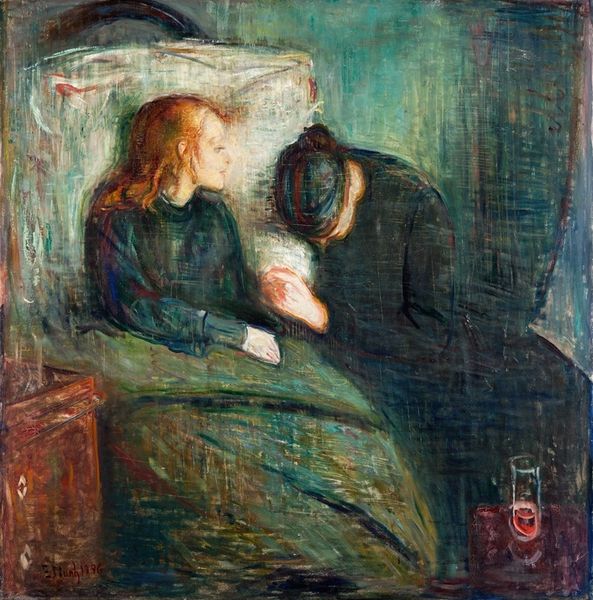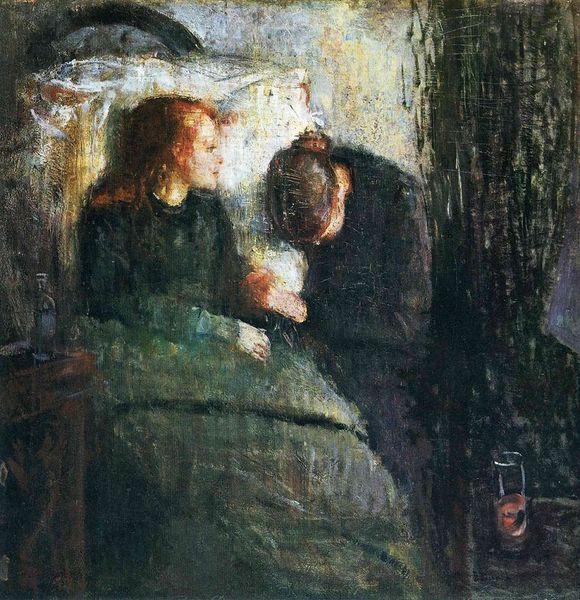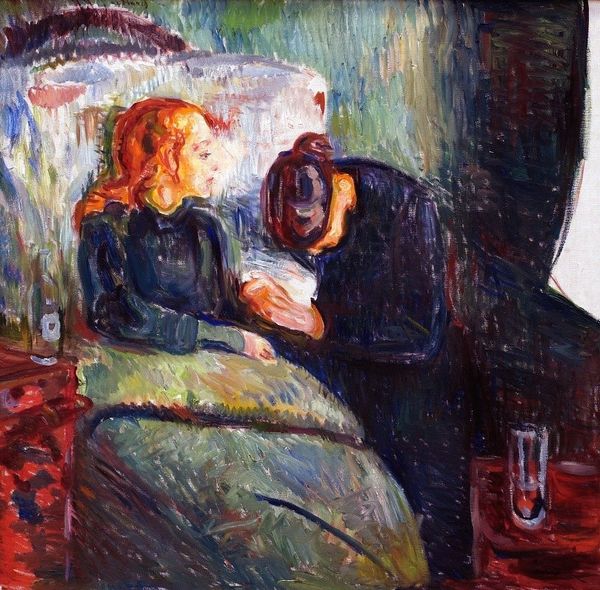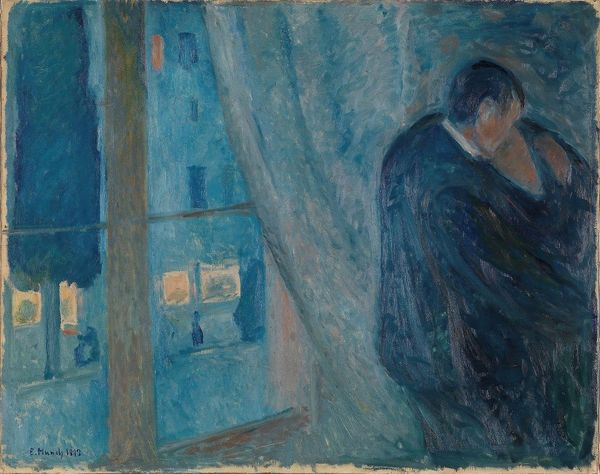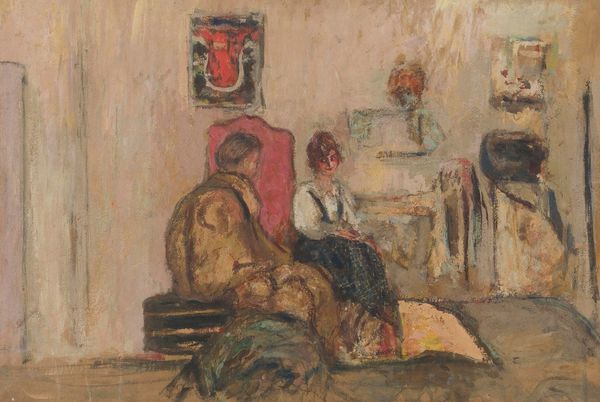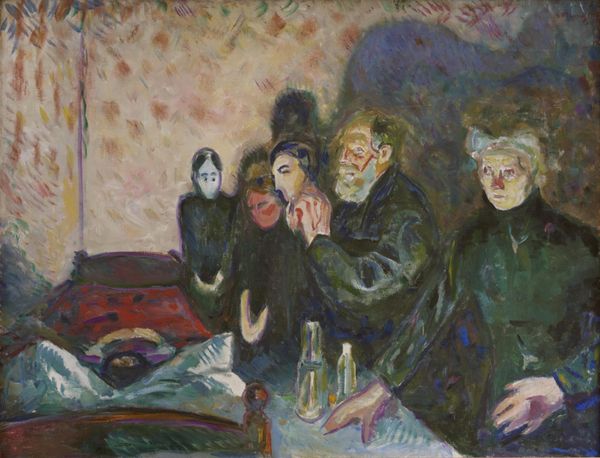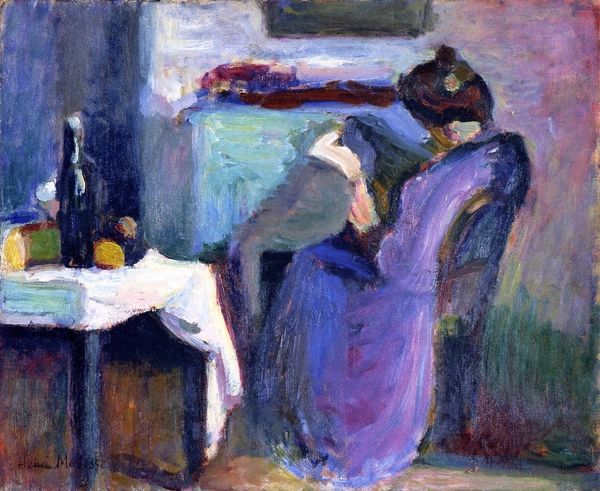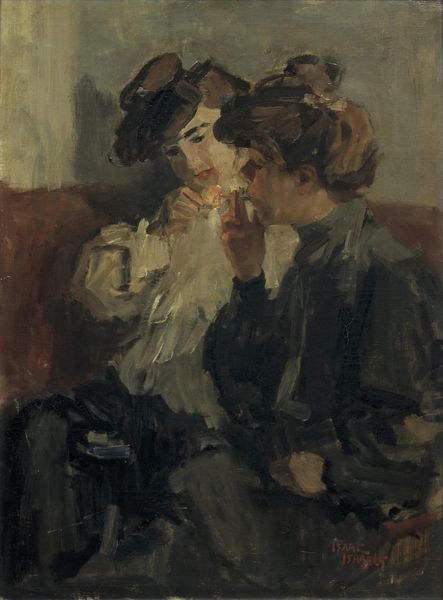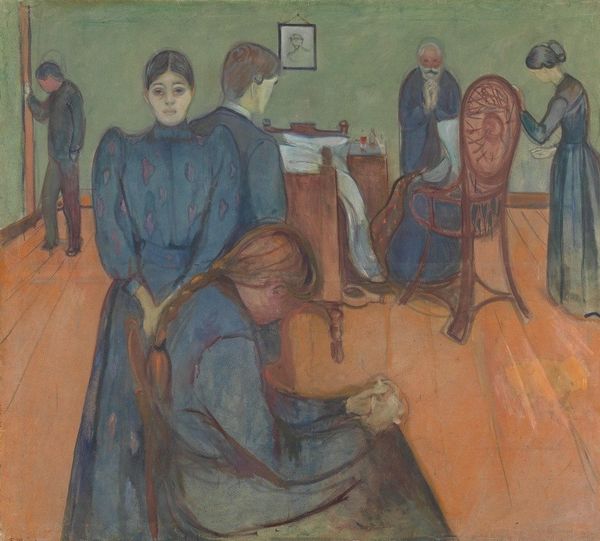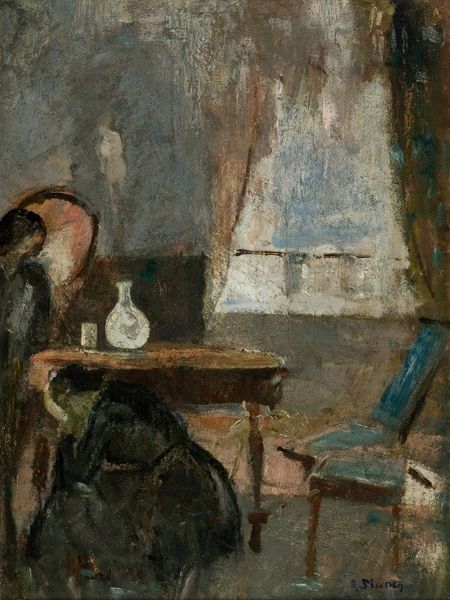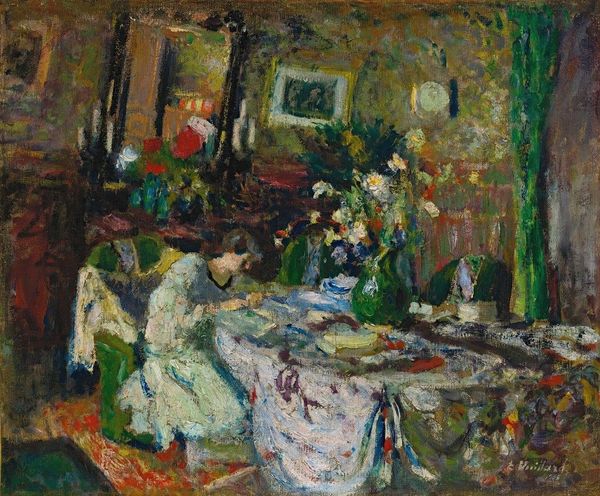
Dimensions: support: 1187 x 1210 mm frame: 1371 x 1393 x 108 mm
Copyright: © Munch Museum/Munch-EllingsendGroup/DACS 2014 | CC-BY-NC-ND 4.0 DEED, Photo: Tate
Editor: Here we have Edvard Munch's "The Sick Child," housed at the Tate. The green and red tones give it such a feverish, unsettling atmosphere. What strikes you about this painting? Curator: The clasped hands are powerful. They remind me of medieval devotional images, the way they’re highlighted, almost like a visual prayer. Do you see how the bowed head echoes the fragility of life, a modern-day Pietà? Editor: I see the resemblance, but I hadn’t thought of it in such a religious context. Curator: It's not explicitly religious, but Munch taps into that deep well of human suffering and compassion that's been represented for centuries. It's a potent symbol of shared grief. Editor: That makes me appreciate the painting's emotional depth even more. Curator: Indeed, by referencing familiar visual language, Munch amplifies the personal tragedy with universal resonance.
Comments
Join the conversation
Join millions of artists and users on Artera today and experience the ultimate creative platform.
tate 6 months ago
⋮
The Sick Child draws upon Munch’s memory of his sister Sophie’s death from tuberculosis at the age of fifteen. The model was a young girl who Munch had observed sitting distraught when he accompanied his father, a doctor, to treat her brother’s broken leg. Munch worked on the painting for a year, developing the rapid brushwork and vivid colour that suggest the painful evocation of a traumatic memory. ‘It was a breakthrough in my art’, he later wrote. ‘Most of what I have done since had its birth in this picture’. He made several versions over a period of forty years. This was the fourth version. Gallery label, January 2019
